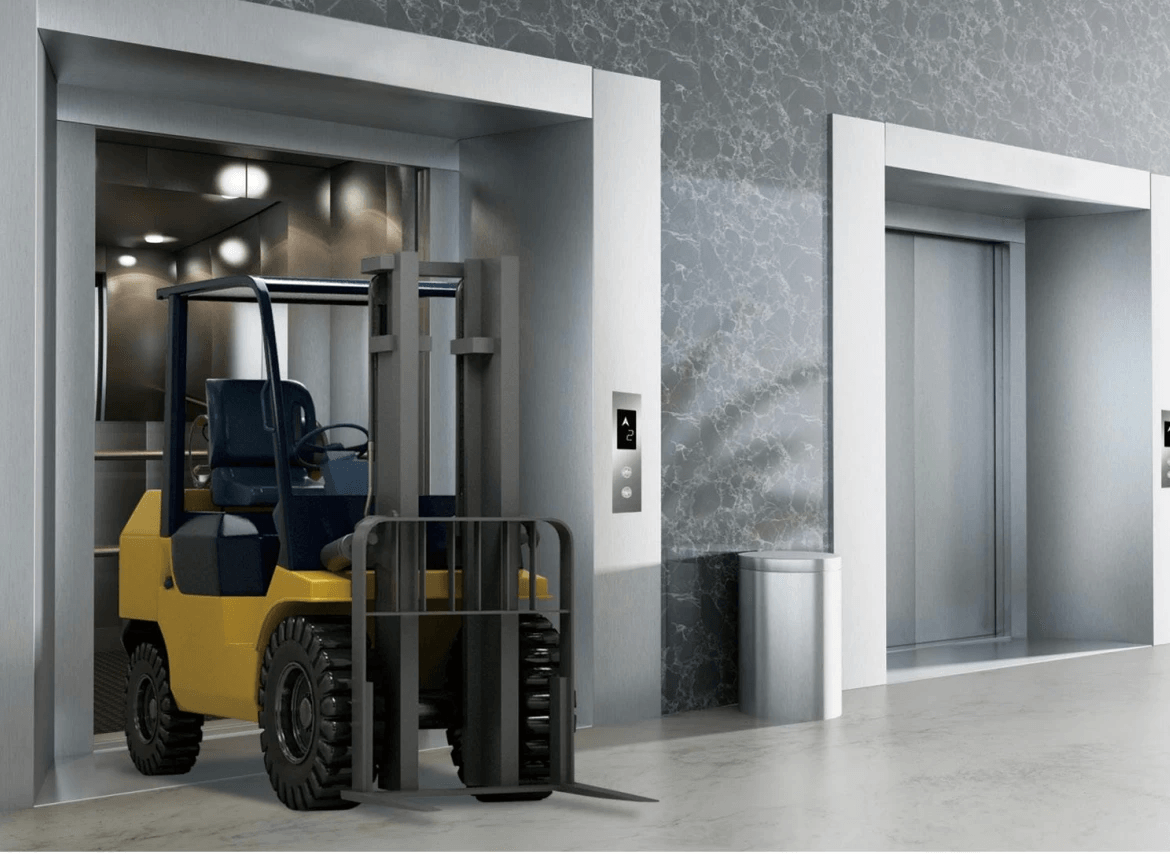Introduction

When it comes to building design, elevator doors play a crucial role in ensuring accessibility and safety for users. The dimensions of these doors are not just a matter of aesthetics, but they also impact the functionality and efficiency of the elevators. Understanding the importance of elevator doors and their dimensions is essential for architects, builders, and property owners looking to create spaces that are inclusive and efficient.
Understanding the Importance of Elevator Doors
Elevator doors are more than just an entryway into a lift; they serve as a barrier between the passengers and the moving parts of the elevator shaft. Their proper functioning is vital for preventing accidents and ensuring smooth operations within buildings. Additionally, elevator doors contribute to the overall aesthetic appeal of a space, making them an integral part of interior design.
The Role of Elevator Dimensions in Building Design
The dimensions of elevators have a significant impact on how buildings are designed and utilized. Architects must consider factors such as building codes, user capacity, and accessibility requirements when determining the size and layout of elevators within a structure. These considerations directly influence the overall design and functionality of a building.
The Significance of Elevator Door Size in Accessibility
The size of elevator doors directly affects accessibility for individuals with mobility challenges or disabilities. A standard door size may not be suitable for all users, necessitating customization based on specific needs. By understanding how door size impacts accessibility, designers can ensure that their buildings are inclusive spaces for everyone.
Exploring Commercial Elevator Dimensions

When it comes to commercial elevator dimensions, the standard size of elevator doors is typically around 36 inches wide and 80 inches tall, allowing for easy access and movement of people and goods. However, the height of elevator doors can be influenced by various factors such as building design, user traffic, and safety regulations. Elevator door dimensions play a crucial role in building codes and regulations, as they directly impact accessibility and safety standards within commercial spaces.
Understanding the Standard Size of Commercial Elevator Doors
The standard size of commercial elevator doors is generally 36 inches wide and 80 inches tall, providing ample space for people to enter and exit comfortably. This size is considered ideal for accommodating large groups of people or bulky items in a commercial setting. The width allows for easy passage, while the height ensures that individuals of varying heights can pass through without any inconvenience.
Factors Affecting the Height of Elevator Doors
The height of elevator doors can be influenced by several factors such as building usage, expected foot traffic, and specific user needs. For high-traffic commercial buildings such as office towers or shopping centers, taller elevator doors may be preferred to accommodate a larger number of people efficiently. Additionally, safety considerations may also impact the height of elevator doors to ensure compliance with building codes and regulations.
Impact of Elevator Door Dimensions on Building Codes and Regulations
Elevator door dimensions have a significant impact on building codes and regulations governing commercial spaces. These dimensions are carefully regulated to ensure that elevators are accessible to all individuals, including those with disabilities or mobility challenges. Building codes often mandate specific requirements for elevator door size to maintain safety standards and provide equal access to everyone within a commercial environment.
Residential Elevator Dimensions and Specifications

When it comes to residential elevator dimensions, the normal elevator door size for residential buildings typically ranges from 36 inches to 42 inches in width and 80 inches in height. However, these dimensions can be customized based on the specific needs and preferences of homeowners. Accessibility and safety features, such as non-slip flooring, emergency communication systems, and handrails, are crucial aspects of residential elevator designs to ensure a comfortable and secure user experience.
What is the Normal Elevator Door Size for Residential Buildings?
The normal elevator door size for residential buildings is usually around 36 inches to 42 inches in width and 80 inches in height. These dimensions are designed to accommodate standard wheelchair sizes and provide ease of access for individuals with mobility challenges. It's important for residential elevator doors to be spacious enough to allow smooth entry and exit while maintaining safety standards.
Considerations for Customizing Residential Elevator Door Dimensions
Customizing residential elevator door dimensions allows homeowners to tailor the design according to their specific requirements. Factors such as household size, individual mobility needs, and architectural layout play a significant role in determining the ideal dimensions for a residential elevator door. By working closely with architects and elevator manufacturers, homeowners can create a personalized solution that seamlessly integrates with their living space.
Accessibility and Safety Features in Residential Elevator Designs
In addition to customizing dimensions, integrating accessibility features into residential elevator designs is essential. Non-slip flooring, tactile floor indicators, audible signals, bright lighting, handrails, and emergency communication systems are vital components that ensure safety and convenience for all users. These features not only enhance accessibility but also contribute to the overall comfort and peace of mind for residents.
How Tall are Elevator Doors: Understanding the Average Height

Elevator doors are typically 80 inches in height, providing ample space for easy entry and exit. However, this standard height may vary based on the building type and design requirements. For instance, commercial buildings may have taller elevator doors to accommodate larger crowds, while residential buildings often opt for slightly shorter doors for a more intimate feel.
Investigating the Average Height of an Elevator Door
The average height of an elevator door is around 80 inches, ensuring comfortable access for most individuals. This standard size allows for smooth movement in and out of the elevator, promoting convenience and efficiency in busy environments. However, variations in door height can be observed based on specific building needs and accessibility considerations.
Variations in Elevator Door Height based on Building Type
Commercial elevator dimensions often feature taller doors to accommodate higher traffic flow and larger groups of people. This ensures that everyone can enter and exit without feeling cramped or restricted by limited space. On the other hand, residential elevator door sizes tend to be slightly smaller to create a more cozy and personalized experience for residents.
Impact of Elevator Height on User Experience and Safety
The height of an elevator door directly impacts user experience and safety within a building. A well-designed door size enhances comfort by allowing easy passage while also promoting safety through smooth operation and minimal risk of accidents. Understanding the average height as well as variations based on building type is crucial in creating optimal user experiences.
The Dimensions of an Elevator Entrance: A Critical Aspect
Elevator entrances are a crucial aspect of elevator design, with the width and depth playing a significant role in user experience and accessibility. The width of an elevator entrance typically ranges from 36 inches to 48 inches, providing ample space for individuals with mobility aids or those carrying bulky items. The depth of an elevator entrance is usually around 80 inches, allowing for comfortable movement within the elevator car.
Exploring the Width and Depth of Elevator Entrances
The width of an elevator entrance is not only crucial for accommodating different user needs, but it also plays a significant role in creating a welcoming and inclusive environment. A wider entrance allows for smoother traffic flow, reducing congestion and making it easier for individuals to enter and exit the elevator without feeling cramped or restricted. This design consideration is especially important in high-traffic areas where multiple users may need to access the elevator simultaneously.
Accessibility Considerations for Elevator Entrance Dimensions
When determining the dimensions of an elevator entrance, accessibility considerations are paramount. Building codes and regulations often specify minimum requirements for the width and depth of elevator entrances to ensure compliance with accessibility standards. By adhering to these guidelines, building owners can create a welcoming and inclusive environment that caters to individuals with diverse mobility needs.
Designing Elevator Entrances for Different User Needs
Elevator entrances can be customized to accommodate specific user needs based on the building's demographic or purpose. For instance, in residential buildings with a high number of elderly residents or families with young children, wider entrances may be preferred to facilitate ease of movement. In commercial settings such as office buildings or shopping centers, accommodating large groups of people or individuals carrying work-related equipment may influence the design of elevator entrances.
By carefully considering the dimensions of an elevator entrance, designers and building owners can create a safe, accessible, and user-friendly environment that meets the diverse needs of occupants while adhering to regulatory standards.
Schmidt's Freight Elevator: A Case Study in Elevator Door Design

Understanding the Dimensions of Schmidt's Freight Elevator Doors
Schmidt's Freight Elevator doors are typically 8 feet in height and 4 feet wide, providing ample space for loading and unloading goods. These dimensions are designed to accommodate large, bulky items commonly found in industrial and commercial settings. The height and width of the doors ensure smooth and efficient movement of goods in and out of the elevator, contributing to overall operational efficiency.
The dimensions of Schmidt's Freight Elevator doors also allow for the easy movement of large machinery and equipment, making them ideal for use in manufacturing facilities and warehouses. The 8-foot height ensures that tall equipment can be loaded and unloaded without any hassle, while the 4-foot width provides enough space for wide machinery to pass through smoothly. This versatility makes Schmidt's Freight Elevator doors a practical choice for businesses with diverse freight transportation needs.
Features and Specifications of Schmidt's Freight Elevator Doors
The elevator doors are constructed using durable materials such as stainless steel, ensuring longevity and resilience against heavy usage. They are equipped with advanced safety features, including sensors that detect obstructions to prevent accidents during loading and unloading processes. The doors also feature a robust locking mechanism to secure valuable cargo during transportation.
How Schmidt's Elevator Door Dimensions Impact Goods Handling
The spacious dimensions of Schmidt's Freight Elevator doors enable easy maneuvering of large items, reducing the risk of damage during transit. This ensures that businesses can efficiently transport their merchandise without worrying about size limitations or potential hazards. The well-designed dimensions contribute to a seamless workflow, enhancing productivity within industrial and commercial environments.
The generous dimensions of Schmidt's Freight Elevator doors also allow for more efficient loading and unloading of goods, reducing the time it takes to move items in and out of the elevator. This time-saving feature can have a significant impact on overall productivity, as employees can focus on other tasks instead of waiting for lengthy loading and unloading processes. Additionally, the ease of maneuvering large items in and out of the elevator can contribute to a safer work environment by minimizing the risk of accidents or injuries associated with manual handling.
Remember that commercial elevator dimensions play a crucial role in facilitating smooth operations within various industries. By understanding the specific requirements for transporting goods, businesses can make informed decisions regarding elevator door design and specifications.
Conclusion

When it comes to designing elevator doors, safety and accessibility should always be top priorities. Whether it's for commercial or residential buildings, considering the future of elevator dimensions in building design is crucial to ensure that they meet the needs of all users. By ensuring comfort and efficiency through elevator door dimensions, we can create a more inclusive and user-friendly environment for everyone.
Designing Elevator Doors for Safety and Accessibility
Incorporating safety features such as sensors, emergency stop buttons, and clear signage is essential in ensuring that elevator doors are safe for all users. Additionally, making sure that elevator dimensions comply with accessibility standards will help create a more inclusive environment for people with disabilities.
The Future of Elevator Dimensions in Building Design
As technology continues to advance, we can expect to see innovations in elevator dimensions that cater to the evolving needs of buildings and their occupants. From smart elevators to energy-efficient designs, the future of elevator dimensions holds great potential for enhancing user experience and sustainability.
Ensuring Comfort and Efficiency through Elevator Door Dimensions
By carefully considering factors such as the average height of an elevator door and the dimensions of an elevator entrance, architects and designers can create spaces that prioritize comfort and efficiency. Customizing residential elevator door dimensions and adhering to commercial elevator dimensions will contribute to a seamless user experience.
With safety, accessibility, comfort, efficiency, and innovation at the forefront of our considerations regarding elevator door dimensions, we can look forward to a future where elevators seamlessly integrate into our built environments while meeting the diverse needs of users.

